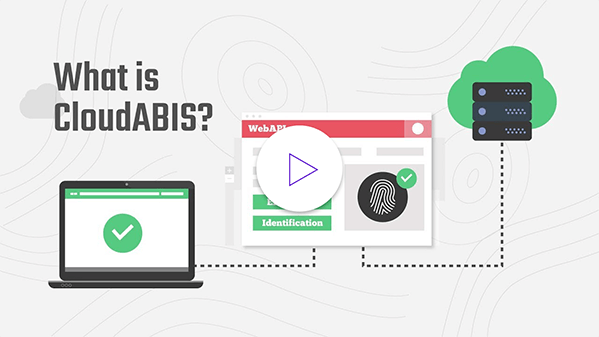The Impact of BYOD Policies on Organizational Security Posture
Bring Your Own Device (BYOD) policies—where employees use personal phones, laptops, or tablets for work—are now a workplace norm, offering flexibility and cost savings. But they also reshape an organization’s security posture, the overall resilience against cyber threats. In 2025, as hybrid work thrives, getting byod security right is make-or-break. Mishandled, BYOD can expose sensitive data; managed well, it can strengthen defenses. Here’s a professional, human-crafted guide to how BYOD impacts security and practical steps to keep your organization safe while embracing its benefits.
Why BYOD Is Everywhere
BYOD took off with remote work, letting employees use devices they already know and love. It’s a win for businesses—a startup can avoid dropping thousands on company laptops. It also boosts efficiency; a designer on their personal MacBook can tweak projects from a coffee shop, keeping work flowing. Employees like it too, since they’re not juggling multiple devices.
But there’s a catch. Personal devices often lack the tight security of company gear, opening doors to risks. Forbes reports that 70% of companies now use BYOD, yet nearly half have faced security issues tied to personal devices. The trick is balancing BYOD’s perks with a security posture that doesn’t crack under pressure.
The Security Risks of BYOD
BYOD can be a hacker’s playground if you’re not careful. Personal devices might run old software, skip antivirus updates, or mix work data with risky apps like unsecured messaging tools. A sales rep’s outdated iPhone could catch malware, leaking client contracts. Lost or stolen devices are another nightmare—Forbes says 60% of data breaches involve mobiles.
Compliance is a hurdle too. Mixing personal and work data on one device can violate laws like GDPR or HIPAA. Imagine a nurse using their tablet for patient records and TikTok; one wrong app could expose private info. Without strong byod security measures, personal devices become the soft spot in your defenses, inviting trouble.
How BYOD Weakens Security Posture
A sloppy BYOD policy can unravel your security framework. Without clear rules, employees might use public Wi-Fi for sensitive emails or skip two-factor authentication, creating easy entry points for attackers. Inconsistent device security—say, one laptop with encryption and another without—breeds vulnerabilities. A 2024 breach at a logistics firm started with an employee’s unpatched personal PC used for work and streaming.
Then there’s shadow IT: employees using unapproved tools like personal Google Drive to store work files, bypassing IT oversight. This makes breaches harder to spot. Weak BYOD setups also bog down IT teams, who scramble to manage a zoo of devices, pulling focus from broader security needs. The result is a shaky security posture that’s tough to shore up.
Strengthening Security with Smart BYOD Policies
Done right, BYOD can actually tighten your security. Start with a clear policy: define which devices are allowed, what apps are okay, and how data should be handled. Require Mobile Device Management (MDM) software to enforce encryption, remote wipes, and app restrictions. A consultant’s iPad could be set to lock work data if stolen, keeping secrets safe.
Train employees on risks—explain why downloading random apps or using weak passwords is a no-go. Use containerization to separate work and personal data on devices, so a hacker can’t jump from a personal game to company files. Regular audits, like checking for outdated software, catch weak spots early. Forbes highlights that proactive training and tech reduce BYOD risks by 40%, turning personal devices into secure tools.
Leveraging Advanced Tools for BYOD Security
Tech is your ally in securing BYOD. Solutions like those in byod security frameworks offer real-time monitoring and threat detection. For example, AI-driven tools can flag suspicious activity, like an employee’s phone accessing files at 3 a.m. Zero-trust authentication—verifying every login, every time—adds another layer, ensuring only trusted users get in.
A mid-sized retailer might use these tools to monitor 100 employee devices, catching a phishing attempt before it spreads. Pair this with secure cloud storage to limit sensitive data on devices. These measures don’t just patch holes—they build a security posture that’s tougher than most company-issued setups, blending flexibility with ironclad protection.
Balancing Productivity and Protection
BYOD’s strength is its flexibility, but don’t let it compromise safety. Involve employees in shaping the policy—ask what tools they need to stay productive. A graphic designer might want Photoshop access on their personal laptop; find a secure way to make it happen. Transparency builds trust, so explain why security steps matter, like MDM keeping client data safe.
Test your policy regularly with simulated attacks to spot gaps. A law firm found their BYOD setup was leaking data through unsecured email apps—fixed after a test run. Balancing usability with security keeps employees happy and your organization shielded, proving BYOD can be a strength, not a liability.
Why It Matters
BYOD policies are a double-edged sword, capable of weakening or strengthening your security posture. In 2025, with cyber threats spiking, getting byod security right is non-negotiable. Clear policies, employee training, advanced tools, and a focus on balance can turn personal devices into secure assets. By addressing risks head-on, you protect sensitive data, meet compliance needs, and keep productivity high. It’s not just about avoiding breaches—it’s about building a resilient organization that thrives in a connected, flexible world, ready for whatever comes next.















